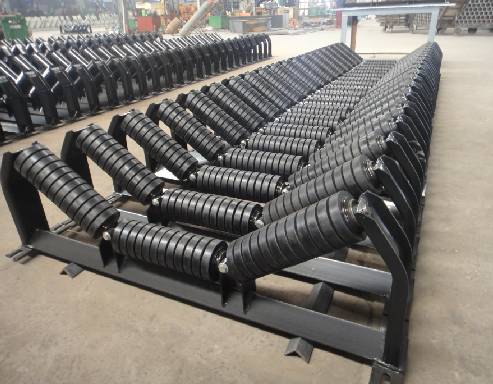 Afrikaans
Afrikaans  Albanian
Albanian  Amharic
Amharic  Arabic
Arabic  Armenian
Armenian  Azerbaijani
Azerbaijani  Basque
Basque  Belarusian
Belarusian  Bengali
Bengali  Bosnian
Bosnian  Bulgarian
Bulgarian  Catalan
Catalan  Cebuano
Cebuano  Corsican
Corsican  Croatian
Croatian  Czech
Czech  Danish
Danish  Dutch
Dutch  English
English  Esperanto
Esperanto  Estonian
Estonian  Finnish
Finnish  French
French  Frisian
Frisian  Galician
Galician  Georgian
Georgian  German
German  Greek
Greek  Gujarati
Gujarati  Haitian Creole
Haitian Creole  hausa
hausa  hawaiian
hawaiian  Hebrew
Hebrew  Hindi
Hindi  Miao
Miao  Hungarian
Hungarian  Icelandic
Icelandic  igbo
igbo  Indonesian
Indonesian  irish
irish  Italian
Italian  Japanese
Japanese  Javanese
Javanese  Kannada
Kannada  kazakh
kazakh  Khmer
Khmer  Rwandese
Rwandese  Korean
Korean  Kurdish
Kurdish  Kyrgyz
Kyrgyz  Lao
Lao  Latin
Latin  Latvian
Latvian  Lithuanian
Lithuanian  Luxembourgish
Luxembourgish  Macedonian
Macedonian  Malgashi
Malgashi  Malay
Malay  Malayalam
Malayalam  Maltese
Maltese  Maori
Maori  Marathi
Marathi  Mongolian
Mongolian  Myanmar
Myanmar  Nepali
Nepali  Norwegian
Norwegian  Norwegian
Norwegian  Occitan
Occitan  Pashto
Pashto  Persian
Persian  Polish
Polish  Portuguese
Portuguese  Punjabi
Punjabi  Romanian
Romanian  Russian
Russian  Samoan
Samoan  Scottish Gaelic
Scottish Gaelic  Serbian
Serbian  Sesotho
Sesotho  Shona
Shona  Sindhi
Sindhi  Sinhala
Sinhala  Slovak
Slovak  Slovenian
Slovenian  Somali
Somali  Spanish
Spanish  Sundanese
Sundanese  Swahili
Swahili  Swedish
Swedish  Tagalog
Tagalog  Tajik
Tajik  Tamil
Tamil  Tatar
Tatar  Telugu
Telugu  Thai
Thai  Turkish
Turkish  Turkmen
Turkmen  Ukrainian
Ukrainian  Urdu
Urdu  Uighur
Uighur  Uzbek
Uzbek  Vietnamese
Vietnamese  Welsh
Welsh  Bantu
Bantu  Yiddish
Yiddish  Yoruba
Yoruba  Zulu
Zulu Bend and Snub Pulley Applications in Mechanical Systems for Enhanced Performance
Understanding Bend Pulley and Snub Pulley in Belt Conveying Systems
In industrial applications, the efficiency and effectiveness of material transportation often hinge on components that form a part of belt conveying systems. Among these components, bend pulleys and snub pulleys play crucial roles in ensuring the seamless operation of belts. Understanding their functions, applications, and differences is essential for anyone involved in the design, maintenance, or operation of conveyor systems.
Bend Pulley Function and Applications
Bend pulleys, also known as curve pulleys, are used primarily to change the direction of the belt in a conveyor system. They are particularly vital in conveyors that need to navigate around corners or bends. By facilitating this directional change, bend pulleys help in maintaining the tension on the belt and ensure that it runs smoothly along the intended path.
The design of a bend pulley often involves a smaller diameter compared to the drive pulley, which is crucial in achieving the bend without over-stressing the belt. Bend pulleys are typically placed at points where the conveyor changes direction, which can be either horizontal or vertical. The use of bend pulleys reduces the risk of belt misalignment, which can cause wear and lead to increased maintenance costs. Their ability to modify the belt’s path enhances the overall flexibility and functionality of the conveyor system.
Snub Pulley Function and Applications
Snub pulleys serve a different yet equally important role within a conveyor setup. Their primary function is to increase the contact area between the belt and the drive pulley. This increased contact improves the frictional grip, which is crucial for the effective transmission of power. Without snub pulleys, the tension in the belt may not be sufficient to convey materials efficiently, leading to slippage and potential system failures.
bend pulley and snub pulley

Snub pulleys are usually positioned in close proximity to the drive pulley and can significantly affect the tensioning of the belt. By adjusting the angle at which the belt makes contact with the drive pulley, snub pulleys facilitate improved engagement, thus enhancing the performance of the conveyor system. Additionally, they can help manage the tension in the belt, allowing it to operate more effectively without excessive wear.
Differences and Use Cases
While both bend pulleys and snub pulleys are integral to conveyor systems, their applications and functions differ. Bend pulleys are predominantly concerned with changing the direction of the belt, while snub pulleys primarily focus on maximizing the drive pulley’s grip on the belt to prevent slippage. The choice between the two depends on the specific requirements of the conveyor system.
For example, in a facility with complex material handling needs that require significant directional changes, bend pulleys would be essential for maintaining an efficient flow of materials. Conversely, in scenarios where increasing the efficacy of the drive system is paramount, snub pulleys would be favored.
Conclusion
In summary, both bend pulleys and snub pulleys are critical components of belt conveying systems, each serving unique and indispensable roles. Understanding their functions not only aids in the selection process for designing effective conveyor systems but also assists in maintaining optimal performance. As industries continue to evolve and the demand for efficient material handling grows, the importance of these pulleys remains unwavering, underscoring their vital contribution to modern manufacturing and logistics. Emphasizing proper maintenance and understanding their functionality can lead to significant improvements in efficiency, ultimately benefitting operational productivity.
-
Revolutionizing Conveyor Reliability with Advanced Rubber Lagging PulleysNewsJul.22,2025
-
Powering Precision and Durability with Expert Manufacturers of Conveyor ComponentsNewsJul.22,2025
-
Optimizing Conveyor Systems with Advanced Conveyor AccessoriesNewsJul.22,2025
-
Maximize Conveyor Efficiency with Quality Conveyor Idler PulleysNewsJul.22,2025
-
Future-Proof Your Conveyor System with High-Performance Polyurethane RollerNewsJul.22,2025
-
Driving Efficiency Forward with Quality Idlers and RollersNewsJul.22,2025





























